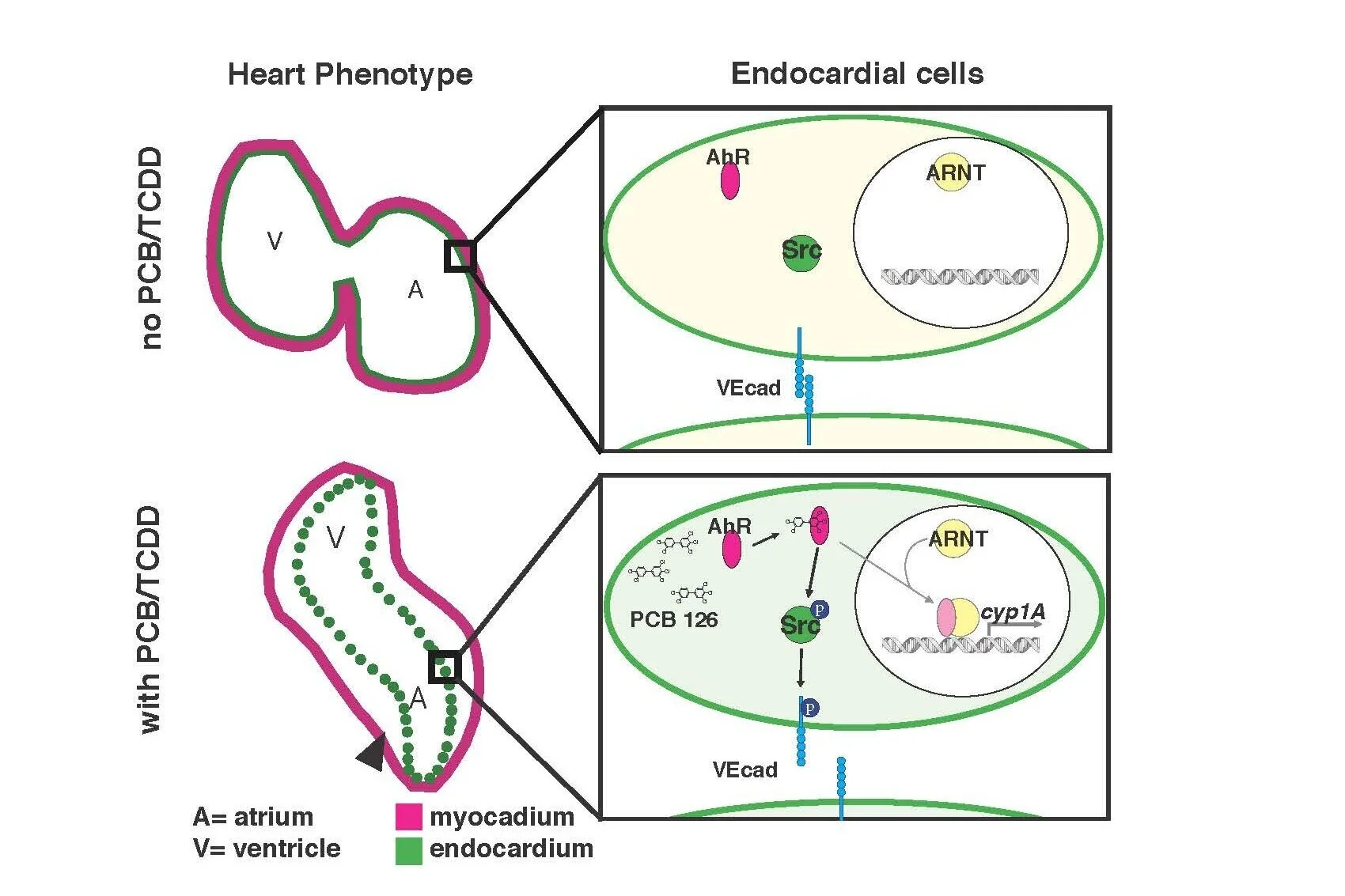Aquatic Toxicology paper published
Dr. Corinna Singleman has paper on work from the lab accepted in the journal of Aquatic Toxicology. This paper, entitled “PCB and TCDD derived embryonic cardiac defects results from a novel AhR pathway.” The work was part of her PhD thesis. A summary of the findings are shown in the visual abstract above and in the written abstract below.
Polychlorinated biphenyls (PCBs) and TCDD are environmental contaminants known to impact heart formation, a key step in the embryonic development of most animals. Several studies suggest that these contaminants act within cells via an AhR-mediated genetic pathway, however, additional evidence suggests this genetic pathway is not the primary molecular mechanism driving the observed cardiac defects in contaminant-exposed fish species. After exposure, the inner endocardial lining of the heart fails to properly maintain integrity resulting in fluid accumulation. Based on preliminary observations, we hypothesized a non-canonical AhR mediated molecular pathway driving the observed cardiac defect: PCB- and TCDD-activated AhR phosphorylates Src, which then phosphorylates the endothelial adherens junction protein, VEcadherin, in the endocardium. This causes the VEcadherin dimers to separate, reducing endothelial tissue integrity resulting in the observed heart defect. These data suggest that the mechanism for PCB and TCDD action in the heart is distinct from the canonical mechanism described in the literature and that cardiac defects are impacted by this nongenomic mechanism.
2021 Singleman, C. and N. G. Holtzman “PCB and TCDD derived embryonic cardiac defects results from a novel AhR pathway” Feb 25: Aquatic Toxicology [URL]

